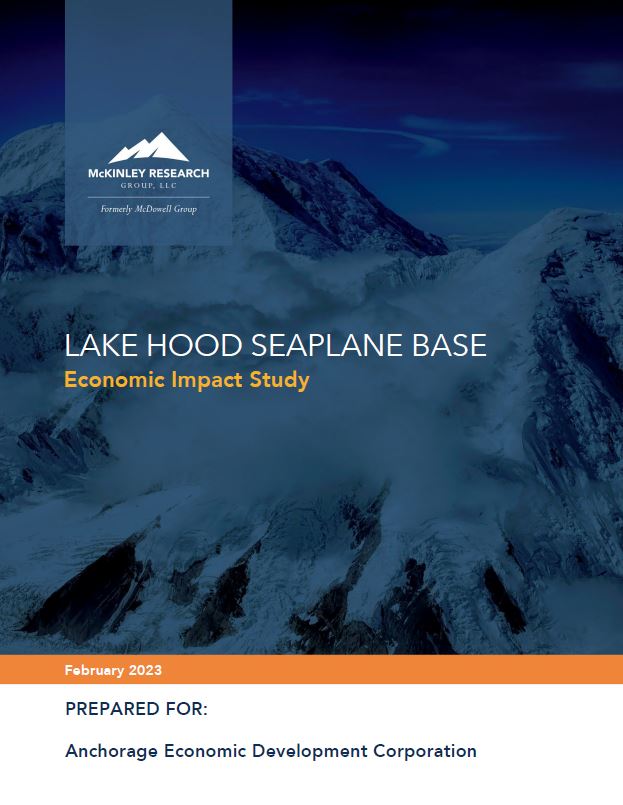Research & Reports
Lake Hood Seaplane Base Economic Impact Study
Lake Hood is the world’s largest and busiest seaplane base and is part of the Ted Stevens Anchorage International Airport (ANC) and a statewide aviation network connecting remote communities to Anchorage. The seaplane base is part of Alaska’s rich aviation history, with floatplane traffic at the lake dating back 100 years.
The infrastructure at Lake Hood facilitates year-round connections in Alaska, with float operations in the summer, ski operations in winter, and a gravel airstrip open to aircraft all year. Lake Hood continues to play an important role in commercial and recreational aviation, supporting economic activity in Anchorage and business operations across Alaska.
About 17,000 customers (Alaska residents and nonresidents) took a flightseeing excursion from Lake Hood in 2021. Lake Hood plays an important role in Anchorage’s visitor industry, offering flightseeing tours across Southcentral and Southwest Alaska, and connecting visitors to remote wilderness lodges, bear viewing opportunities, backcountry fishing, and more. The number of customers taking a flightseeing tour based at Lake Hood increased over the last decade. Activity was impacted by the effects of the COVID-19 pandemic on the visitor industry but rebounded in the 2021 and 2022 visitor seasons.

